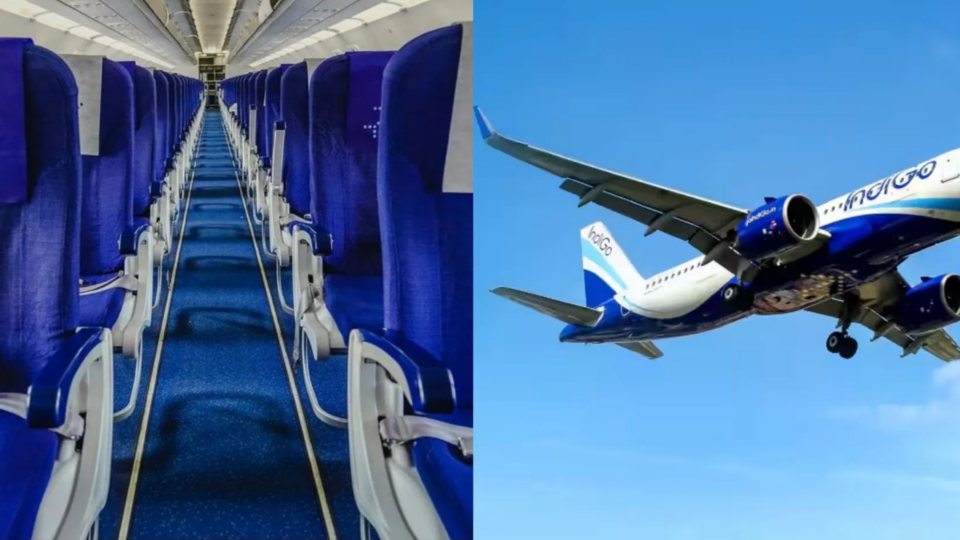
27 Indian Cities That Got Their Names Changed
Your name defines who you are, right?
If one day, someone starts calling you with a different name you’ll definitely find it weird. But, when we talk about Indian cities, changing their name is not a big deal.
Recently, Chief Minister of U.P. changed the name of Allahabad city to Prayagraj, which is supposed to be its ancient name. As a person, I felt weird to call Allahabad as Prayagraj all of a sudden. Reason? I have always known Allahabad as ‘Allahabad’ goddamnit. But hey, it happens in India.
And apparently, it has happened several times in the past. You think I am joking? Have a look at these 27 cities that had their names changed in the past.
1. Ahilyanagari/Indur to Indore

On his journey towards conquering Ujjain, Raja Indra Singh had to take a stop which happened to be beside river ‘Khan.’ He was impressed by the scenery and decided to build the Indreshwar temple. He also established a city near the shore and named it as Indrapur. Later, when the power was handed down to the Marathas, they renamed the place as ‘Indur.’
Finally, during the British rule, this place was re-named again. And ever since, it is known as Indore.
2. Allahabad to Prayagraj
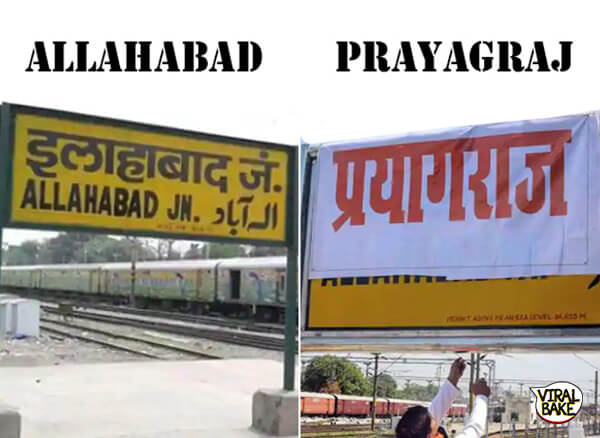
Originally, Allahabad was known as Prayag, but later during the Mughal Raj, Akbar fell in love with this city. He wanted to build his forts inside city boundaries. In 1583 Akbar found his desired spot, which was the mountain from where he could see the confluence of river Ganga and Yamuna. Akbar decided to build four forts there and named the city as Illhabas.
After a year, Shah Jahan again changed its name and started calling it ‘Allahabad.’ Since then, the city was known as Allahabad for many years. Though recently, the city was renamed again by the chief minister Yogi Adityanath and now it’s officially known as Prayagraj.
3. Kashi to Varanasi

Kashi was the original name of this city and there is mention of this city in our Vedas too. Many other ancient Indian textbooks include this city’s name as well. It was considered to be one of the oldest city.
Though, in 1958 Kashi’s name was changed into the modern version ‘Varanasi’, which was basically the combination of two rivers, Varun and Asi (Asi Ghat).
4. Bangalore to Bangaluru
In 1791, when Tippu Sultan lost the third Anglo Mysore War, he also lost the city of Bengaluru. During the British Raj, Britishers started to call Bengaluru as Bangalore and that’s how the city has got its name change for the first time.
Though, on November 1, 2014, the government of India restored the name to its original name.
Also Read: 5 Times When Technology Almost Destroyed The World
5. Baroda to Vadodara

Vadodara receives its name from the word ‘vatodar’, which means ‘the core of a Banyan tree’. During the British rule, foreign invaders changed the came according to their convenience and started calling it as Baroda.
Later, in 1974, the Indian government changed the name of the city back to Vadodara.
6. Belgaum to Belagavi

Derived from the Sanskrit word Velugrama which means bamboo village, Belagavi is the only name change that was not appreciated by the locals. Proposed by the Karnataka government on 27 October 2006, the name change finally took place after 8 years.
7. Bombay to Mumbai

In 1955 when Shiv Sena won the election in Maharashtra, they declared that they are going to change the name of Bombay city to Mumbai as Bombay sounds British and corrupt. Moreover, Mumbai is based on the name of a goddess ‘Mumba Devi.’
8. Calcutta to Kolkata

In 1686, when the European powers were trying to expand the British Raj, they captured many small villages in the area named as Sutanuti, Govindpur, and Kalikata. Based on the name of the last village captured, Kolkata got its first major name change and became Calcutta (Indian city of joy).
Later in January 2001, CM of West-Bengal re-named this city as Kolkata, which is also based on the name of the last village that existed before the British Raj.
9. Cawnpore to Kanpur (change effective 1948)
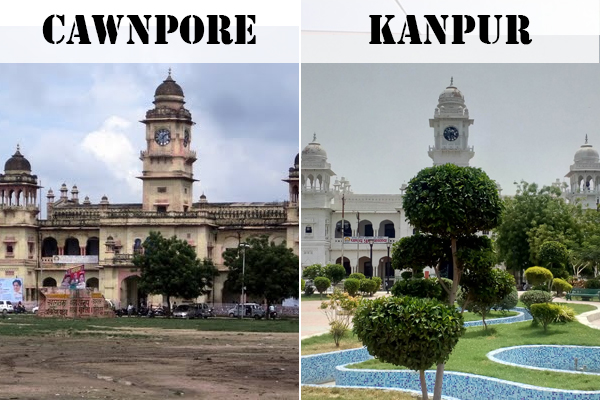
During the 19th century, Cawnpore served as a British garrison and barrack that used to hold more than 7000 soldiers. But, in 1879 after some spelling changes, Cawnpore became Kanpur.
10. Cochin to Kochi (change effective from 1996)
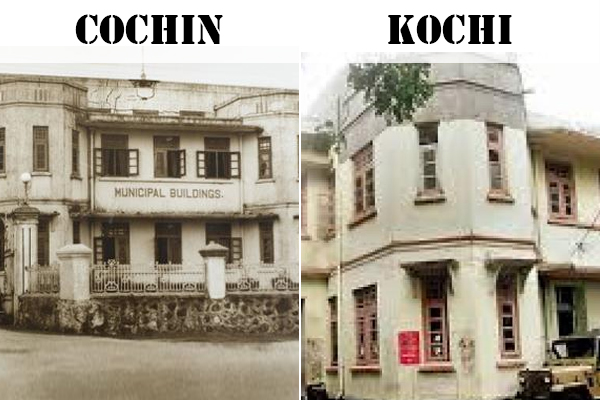
Kochi was the favorite destination for many traders and they all tried to give this city a different name. There were names like Cocym, Cochym, Cochin, Kochi used for the city. Britishers were finding it hard to pronounce these names, that’s why they changed it to Cochin.
In 1996, Government of India renamed the city to Kochi, which is pretty close to what it used to be called before British Raj.
11. Gauhati to Guwahati

Guwahati drives its name from the Assamese word, ‘Guwa’ which means areca nuts and ‘Hati’ that means market. But Britishers found it hard to pronounce it properly. So, instead of learning the correct pronunciation, they started to call the city Gauhati in their English accent.
Because Britishers were ruling India at that time, Guwahati started to get registered as Gauhati in all the legal documents. Later in 1980, Indian government changed the spelling of this town to what it should have been originally and now, we know this city of temples as ‘Guwahati.’
Did You Read: States In India Apart From Bihar Where Alcohol Is Banned
12. Gurgaon to Gurugram

Holding the rich heritage of our past, Gurugram has been mentioned in the oldest Sanskrit literature “Bhagwat Geta”. Considered as the center of education, Gurugram simply means village of guru (where guru represents the Guru Dronacharya from Mahabharat). Gurgaon is also supposed to carry the same meaning as Gur-Gaon (Guru ka Gaon), but many people misinterpreted it with ‘Gur’ which in Hindi means jaggery.
So, in order to clear this confusion, on 27 September 2016, CM of Haryana state announced the new name of the city, Gurugram.
13. Jubbulpore to Jabalpur

Jubbulgarh got its name from that of a holy saint ‘Jabali.’ Even though there is no mythical or folklore evidence available to prove this fact, before Brtish raj, people were cool with it. But, when Britishers came, they found it hard to pronounce, so, they named the city in their own way as ‘Jubbulpore’.
Though, in 2006 the MCD department of the city renamed the city to Jabalpur.
14. Khadki to Aurangabad

Before 1626, Aurangabad was known as Khadki. The name was given by Malik Amba, Shah of Ahmadnagar. Under his rule, the city grew populous but after his death, the power was transferred to his son Fateh Khan, who changed the name to Fathenagar.
The name stayed same till 1653, after that when Mughal prince Aurangzeb came into power and changed its name accordingly, to Aurangabad. Finally, one city that Britishers didn’t find hard to pronounce during their rule, phewww…
15. Madras to Chennai

During the British presence, the city was called as Madras, even though the name was never adopted by local people. Being the capital of entire South India, everyone started to recognize the south of India as Madras Presidency. After independence, the government grouped south into four different sectors depending on their regional language and culture.
That was when, Madras was the capital of Tamil Nadu, which is one of the four sectors that were grouped by the government after independence. Later in 1996, when government realized that the local people still refer to Madras as Chennaipatnam, they decided to change the name of the city according to what local calls it. Thus, Madras became Chennai.
16. Mandav Nagar to Mandi

Originally known as Mandav Nagar which was named after the great sage Mandav when he penanced for many years, this place was also known as the Varanasi of hills. Though in 1948, the place got its new name ‘Mandi’ which means market in Hindi.
17. Mangalore to Mangaluru

This change of name was proposed by the Karnataka government on 27 October 2006. Though it took almost 8 years, the name change finally took place and Mangalore became Mangaluru. At that time, government of Karnataka had proposed to change the name of 12 cities (including Mangaluru) to its kannad articulation.
18. Mysore to Mysuru
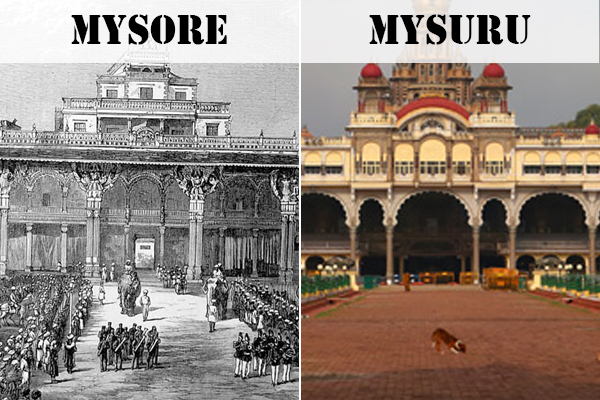
You must have already guessed it, Muysuru is the kannad articulation of Mysore. Mysuru was one of the 12 cities that were proposed to get a name change. The decision was pending for eight years but the results were declared at last. On the 69th anniversary of Karnataka state formation, they announced the new name of the city as ‘Mysuru’.
19. Orissa to Odisha

We need to write words the way we pronounce it but Britishers found it hard to pronounce few names. That’s why, whenever they had issues, they replaced “D” with “R”, the way they spoke it. Though, it was not the real name, that’s why government of Orissa proposed to change its name in 2010.
After a year, on 24 March 2011, upper house parliament passed the bill and Orissa become Odhisa.
Also Read:We Knew India Is Polluted, But Ranking First Globally Is Too Much
20. Panjim to Panaji

In an effort to send back the Portuguese from the Indian state of Goa, the Republic of India changed the Portuguese name of Goa’s capital from Panjim to Panaji.
21. Pondicherry to Puducherry

Originally known as Puducherry which means “New Town” in Tamil, used to be a French colony in early times. The local Tamil citizens in the area started to refer these new French settlers as Pondi and hence this place got its name Pondicherry. Later, in 2006 government decided to change back the name to its original name, which is Puducherry.
22. Poona to Pune

Before it was the kingdom of Shivaji, this city was referred to as Punawadi. Later, when King Shivaji started to develop the city, he made it the capital of Maharashtra, and also changed its name from Punawadi to Puna. But after that, Maharashtra empire took a fall in 1883 and Britishers got control of it.
It was their inability to pronounce Indian names, and that’s why Punawadi became Poona. Finally, in 1978, Government of India replaced Poona with its traditional name, Pune.
23. Simla to Shimla
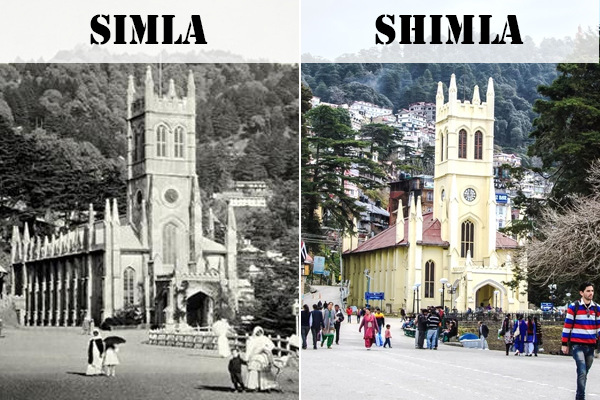
Before 18 century, Shimla was covered with dense forest. There were only a few scattered houses and Jakhoo temple dedicated to Hanuman (Hindu god). Pleasing climate and beautiful scenery attracted Britishers and they established a city in 1815 called Simla.
Later in 1974, when Himachal Pradesh already came into existence, the government decided to change the name according to more accurate pronunciation and started to call it as Shimla.
24.Tanjore to Thanjavur

After the independence, Tanjore, Tamil Nadu’s most famous temple city received a spelling change. Now, it is known as Thanjavur. It is the name derived from the name of Hindu mythological demon called Tanjan.
25. Trichinapoly to Tiruchirapalli

In 1971, Tamil Nadu decided to change its loving city called Trichy to a more Indian sounding name, and that’s how it came to be known as ‘Tiruchirapalli.’ It is believed that the name is derived from Chiruta-Palli meaning “little town.”
Also Read: International Places Women Can Go Solo-Backpacking From India
26. Trivandrum to Thiruvananthapuram (change effective from 1991)

Before British Raj in India, Thiruvananthapuram was a central city in the south. The city was built around the Padmanabha Swamy Temple. It was hard for Britishers to pronounce such as long name, so they cut it short and start calling it as Trivandrum.
In 1991, Kerala government decided to abandon the name that was given by the foreign invaders and started calling it with its original name Thiruvananthapuram.
27. Waltair to Vizagapatnam to Vishakhapatnam

During the British Raj, British colonial gave the name Waltair to this city. Later, in 1987 government finally got rid-off this English name and changed it to Vishakapatnam. Though, before becoming Vishakhapatnam the city was named as Vizagapatnam or in short Vizag.
In Conclusion:
I feel exhausted after reading how many times the names of cities have been changed in India. And I can’t imagine the mass confusion that must have been created back in the olden times. I mean they didn’t even have whatssap where they could keep an update. LOL.
After reading this list you too must have understood the meaning and importance of a name. So now, if you meet a fan of Shakespeare or someone who like the phrase- “What’s in the name.”


